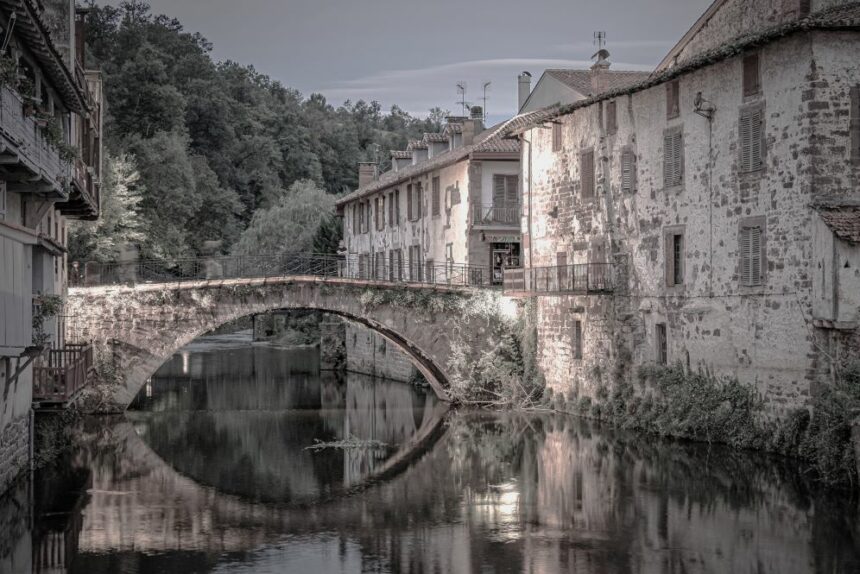Saint-Jean-Pied-de-Port is a classic picturesque Basque village Which is located in the Pyrénées-Atlantiques department in the New-Aquitaine region, in south-western France.
At Saint-Jean-Pied-de-Port, the rivers Laurhibar and Nive d’Arnéguy flow into the Nive, which is still called Nive de Béhérobie near the city.The city is an important place on the Way of St. James Via Podiensis and also the last stop on French soil. The pilgrimage then continues on the Camino Francés, which leads into the Pyrenees, over the Ibañeta Pass, to Pamplona and finally to Santiago de Compostela. At the same time, the Pyrenean hiking trail GR10 between Hendaye on the Atlantic coast and Banyuls on the Mediterranean also runs through this place.
Saint-Jean-Pied-de-Port offers several pilgrim hostels , hotels and private rooms , as well as a tourist information office, a campsite and an SNCF train station.
Access : Coordinates: 43.165, -1.2356 /
Highlights :
- Saint-Jean-Pied-de-Port is the starting point for the French Way Camino Francés, the most popular option for travelling the Camino de Santiago.
- Saint-Jean-Pied-de-Port has been listed, since 2014, as one of the most beautiful towns in France (Les Plus Beaux Villages de France).
- Top sights in Saint-Jean-Pied-de-Port : The old medieval fortress was located in a dominant position over the town, occupying the same location that the citadel currently occupies in the time of Louis XIV of France. / The España neighborhood that runs from the mill to the Jeu de Pomme square and the Manutación bridge. / Puerta del Mercado or Navarra, located on a street where the old medieval market was installed. / Puerta de Nuestra Señora, in front of the bridge over the Nive and the España Street neighborhood. / Church of Santa Eulalia, where its Romanesque portico deserves special mention. / Church of Santa María / Casa Arcanzola, whose lintel shows the date 1510, takes its name from some Aragonese poets, Argensola, from the second half of the 15th century. / The Bishops’ Prison, declared a Historical Monument on January 14, 1941 / The Eyheraberry Bridge and Avenue. It was built in 1640, near Eyheraberry mill. / Puerta de Francia / Puerta de Santiago.
Go next : Saint-Jean-le-Vieux / Ossès / Baigorri / Estérençuby / Ispoure / Uhart-Cize / Arnéguy / Luzaide-Valcarlos – Spain.

